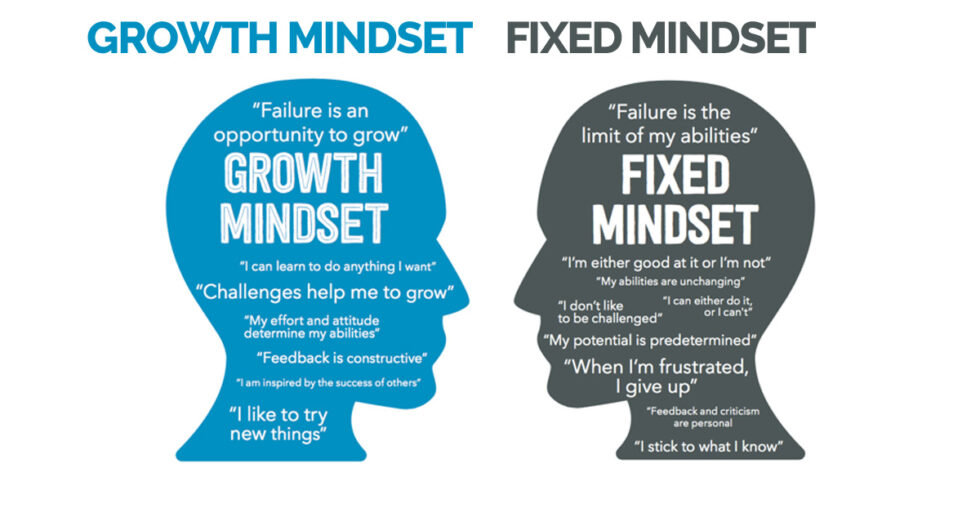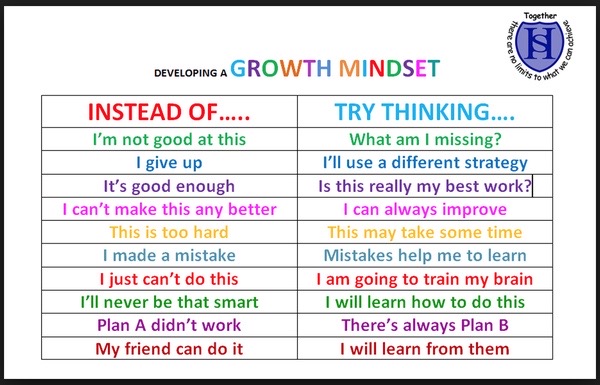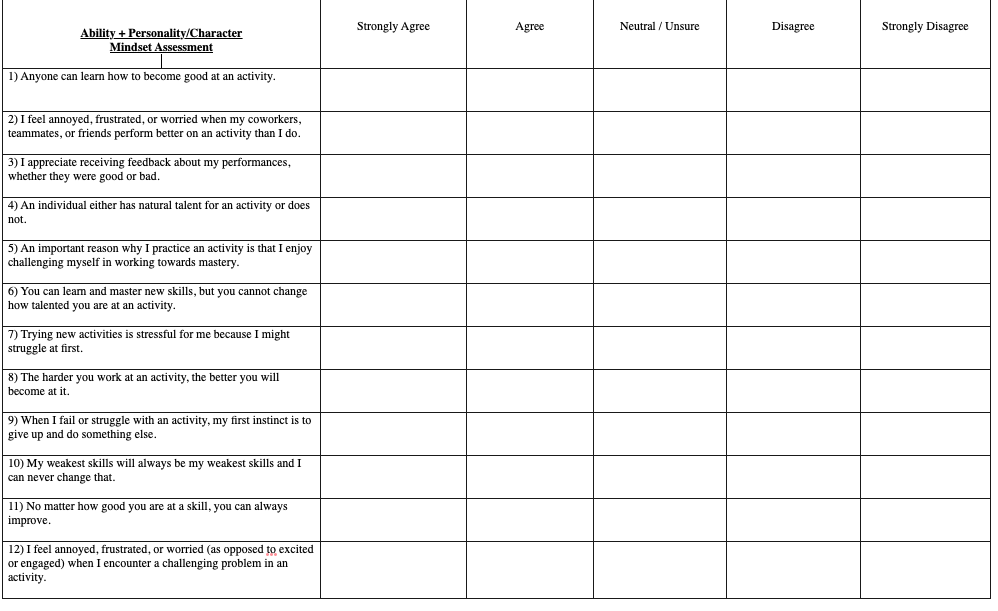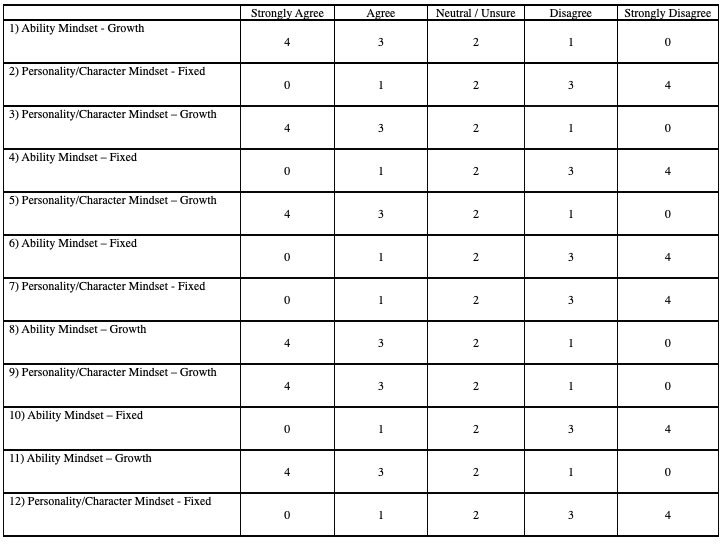Most trainers have encountered a client who outwardly appeared to have all the ability and desire needed to achieve their personal goals and aspirations, yet didn’t live up to the expected level. There are numerous reasons for coming up short: improper diet, inadequate rest and recovery, wavering commitment, and so forth. One explanation that some trainers may not have previously had much exposure to is the influence of mindset. Let’s explore how fitness and health success can be bolstered by helping clients adopt a growth mindset.
Mindset Explained
Humans are extremely self-reflective. Every individual has moments where their inner thoughts are self-critical, negative, or anxious in the face of adversity. Similarly, every person has occasions where they embrace challenges, persist despite setbacks, and put in concentrated effort to overcome obstacles. The ways in which we process and react to difficult situations are guided by our methods of thinking, or in another word, our mindsets.
A mindset is the collection of attitudes or beliefs an individual holds.
Research primarily led by Stanford University Psychologist Carol Dweck has thoroughly explored the role that mindsets play in realizing long-term success, both in sport and general life. Through the course of her work, Professor Dweck proposed and refined a continuum that describes two divergent manners of thinking that can increase the likelihood of achieving great success or lead away from positive outcomes. The opposite ends of the spectrum are termed as “Fixed” and “Growth”.
Fixed vs. Growth Mindsets
Fixed Mindset
An individual with a fixed mindset believes that intelligence and/or talent is static or unchangeable. People who hold these views do not believe practice will change their innate abilities, so they have a deep desire to appear smart or skillful from the get-go in a relevant activity. As such, fixed mindset individuals tend to avoid difficult challenges, become defensive or give up quickly when faced with obstacles, see effort as unnecessary, disregard constructive criticism, and can even feel threatened by the achievements of others.
One might imagine how any of these behaviors could be potentially damaging to long-term success. Undertakings worth accomplishing typically require overcoming arduous obstacles, learning from mistakes, accepting feedback, as well as working closely alongside others for mutual benefit.
An example of a fixed mindset behavior in practice could be a work supervisor who ignores business process suggestions from their subordinates because “they know what works best”. Another instance could be a child’s hesitancy to try out a new activity, as they worry about embarrassing themselves in front of their peers by not being an expert from the start.
[sc name=”masterfitness” ][/sc]
Growth Mindset
On the other side of the spectrum, the growth mindset centers around the belief that personal characteristics are modifiable. Hence, the core difference between the two ends of the continuum lies in the belief in the permanence of talent, intelligence, and ability – not their overall levels of presence.
Growth mindset behaviors include a desire for learning and improvement, the embrace of challenge, persistence in the face of setbacks, seeing effort as a path to mastery, seeking out criticism, and finding inspiration from the successes of others (Dweck, Carol 4). These actions are logical, as a person will be more likely to give effort towards a goal or repeatedly try to achieve an objective if they believe such endeavors will increase their aptitude at that task.
As mindset is a spectrum, every individual holds both fixed and growth beliefs and engages in both types of behaviors at times. What has been repeatedly proven through research though, is that growth mindset individuals are far more likely to become high achievers or elite performers (Dweck, Carol S. 4-5). This echoes studies by scientists such as Anders Ericsson – who is best known for his work on the so-called “10,000-hour rule” – that concentrated practice leads to excellence.
The path to bettering oneself lies in recognizing one’s own thoughts and actions. If you can understand your own methods of thought, you can work to change your mindsets. As mindsets are just collections of beliefs, they can certainly be shifted over time. Further, such transformations in beliefs can help lead to the modification of behaviors.

Image Credit: https://www.chrisflickinger.com/wp-content/uploads/2020/07/Growth-v-Fixed-980×513.jpg
Testing Mindset
The sample survey presented below can be used as an assessment tool for evaluating where on the spectrum of a growth versus fixed mindset an individual currently falls. The first page presents the actual survey questions, while the second page provides the scoring information.
The twelve questions can be split into two categories: ability and personality/character. The beliefs that an individual might hold about activities or skill sets (ability) – such as resistance training, mathematics, or playing an instrument – can vary from the beliefs that an individual might hold about their nature and temperament (personality/character). It is important to understand a client’s beliefs regarding both categories in order to best address areas of fixed attitudes with the highest level of specificity.
Promoting a Growth Mindset
Once you know where an individual falls on the spectrum, focus on specifically addressing areas of fixed beliefs and encourage a shift towards (positive) growth attitudes.
- If someone struggles with challenges and obstacles – have them try out a new activity that has always interested them. Most likely, they will not be elite right away. Encourage them to persist in this activity and suggest they attempt new problem-solving strategies to the challenges they encounter. (Dweck, C. [2015] 1)
- If someone does not receive criticism well – have them reach out to individuals whom they trust and elicit advice from them on specific topics. Work with the individual to clearly explain why these critiques might have merit and are worth hearing.
- If someone does not believe intelligence and skills are variable – write out a list of behaviors they complete in a given day: occupation or work, athletics, cooking, driving, etc. Challenge them on whether they have improved in their abilities to complete these tasks over time.
- If someone is intimidated by the achievements of others – join a community group or recreational team that works towards a mutual objective. The success of any one individual helps everyone, encouraging cooperation and collaboration.
- Foster curiosity and passion! Deep interest and engagement with a topic or activity will greatly promote the desire to learn and work towards mastery.
- Remember to praise thoughtful and concentrated effort towards an objective [process praise], not outright ability, intelligence, or talent [person praise] – especially when working with children! (Dweck, Carol S, and David S Yeager 7)
Ultimately, promoting a growth mindset in clients alone is not enough though. As a trainer or coach, regular interactions with clients will reveal aspects of your own mindset.
Carol Dweck writes, “What [athletes] believed about their coaches’ values was even more important. The athletes who believe that their coaches prized effort and practice over natural ability were even more likely to have a superior season” (Dweck, Carol S. 6). Therefore, it is imperative that trainers work to adopt a growth mindset themselves if they wish to best promote it with their clients.

Photo Credit: http://www.lacimetta.com/


Scoring:
Ability – #1, #4, #6, #8, #10, #11
Fixed = 0 – 6
Fixed with Growth ideas = 7 – 12
Growth with Fixed ideas = 13 – 18
Growth = 19 – 24
Personality/Character – #2, #3, #5, #7, #9, #12
Fixed = 0 – 6
Fixed with Growth ideas = 7 – 12
Growth with Fixed ideas = 13 – 18
Growth = 19 – 24
For more information see:
The power of believing that you can improve | Carol Dweck, 2014 Ted Talk
References
David Scott Yeager & Carol S. Dweck (2012) Mindsets That Promote Resilience: When Students Believe That Personal Characteristics Can Be Developed, Educational Psychologist, 47:4, 302-314, DOI: 10.1080/00461520.2012.722805
Dweck, C. (2015). Carol Dweck Revisits the ‘Growth Mindset. Education Week. 35(5)
Dweck, C. (2016, January 13). What Having a “Growth Mindset” Actually Means. Harvard Business Review. Retrieved July 10, 2022, from https://hbr.org/2016/01/what-having-a-growth-mindset-actually-means
Dweck, Carol. Mindset: How You Can Fulfill Your Potential. Robinson Publishing, 2012.
Dweck, C. (2009). Mindsets: Developing Talent through a Growth Mindset. Olympic Coach, 21, 4.
Dweck, Carol S. “Mindsets: Developing talent through a growth mindset.” Olympic Coach 21.1 (2009): 4-7.
Dweck, Carol S, and David S Yeager. “Mindsets: A View From Two Eras.” Perspectives on psychological science: a journal of the Association for Psychological Science vol. 14,3 (2019): 481-496. doi:10.1177/1745691618804166
Yeager, D.S., Hanselman, P., Walton, G.M. et al. A national experiment reveals where a growth mindset improves achievement. Nature 573, 364–369 (2019). https://doi.org/10.1038/s41586-019-1466-y
An NFPT Certified Personal Trainer, Andrew is also a lifelong swimmer, with coaching experience in the sport that spans the gambit of children learning to swim, to developing adolescents, to NCAA champions. He has personally achieved multiple U.S. Master’s Swimming Top-10 accolades, and he has given educational presentations at elite swim camps across the country. Andrew will be pursuing a Masters of Public Health degree in Health Behavior & Health Education at the University of Michigan beginning in the Fall of 2022.

